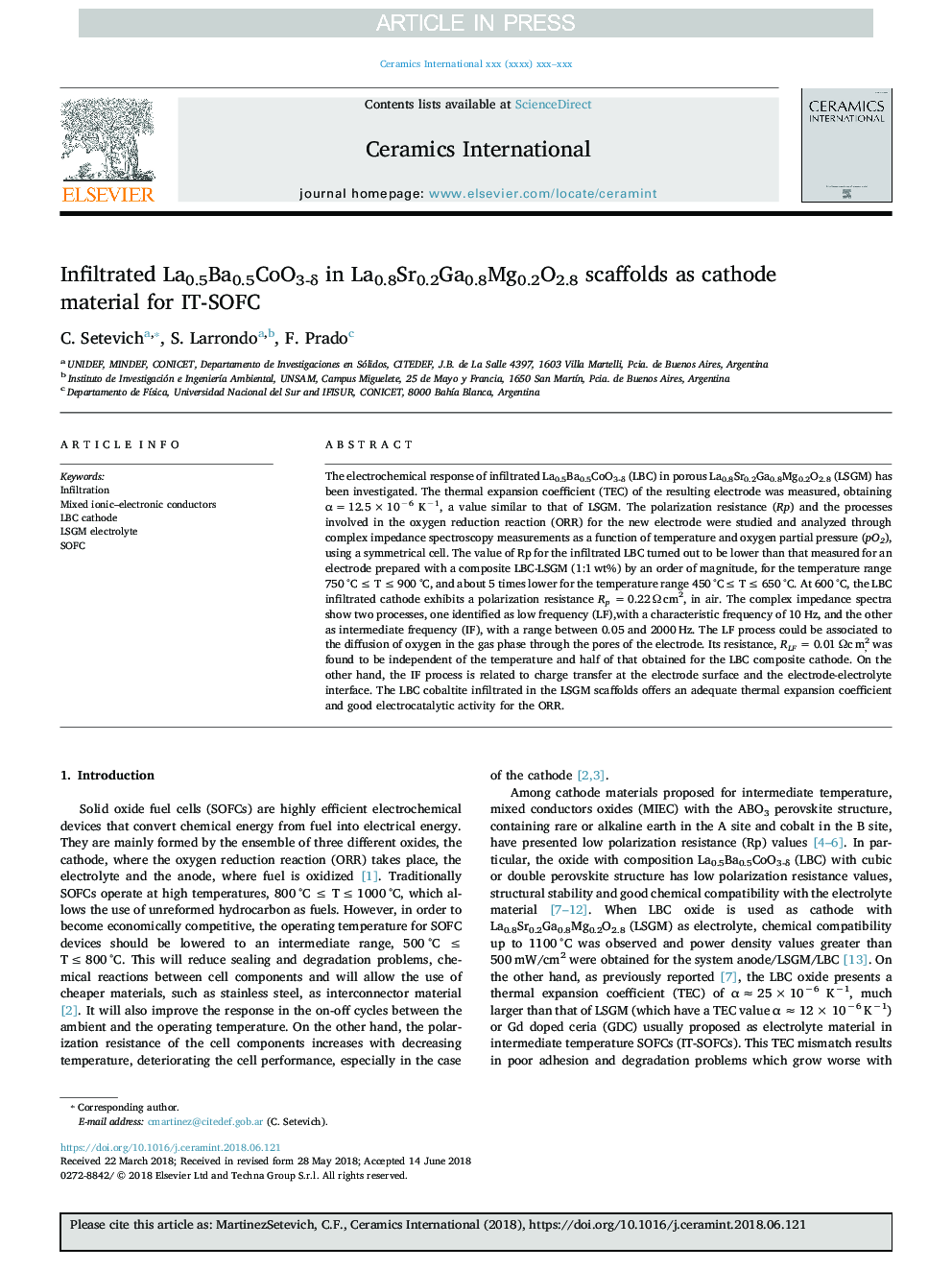| Article ID | Journal | Published Year | Pages | File Type |
|---|---|---|---|---|
| 7886183 | Ceramics International | 2018 | 8 Pages |
Abstract
The electrochemical response of infiltrated La0.5Ba0.5CoO3-δ (LBC) in porous La0.8Sr0.2Ga0.8Mg0.2O2.8 (LSGM) has been investigated. The thermal expansion coefficient (TEC) of the resulting electrode was measured, obtaining αâ¯=â¯12.5â¯Ãâ¯10â6 Kâ1, a value similar to that of LSGM. The polarization resistance (Rp) and the processes involved in the oxygen reduction reaction (ORR) for the new electrode were studied and analyzed through complex impedance spectroscopy measurements as a function of temperature and oxygen partial pressure (pO2), using a symmetrical cell. The value of Rp for the infiltrated LBC turned out to be lower than that measured for an electrode prepared with a composite LBC-LSGM (1:1â¯wt%) by an order of magnitude, for the temperature range 750â¯Â°C ⤠Tâ¯â¤â¯900â¯Â°C, and about 5 times lower for the temperature range 450â¯Â°C⤠Tâ¯â¤â¯650â¯Â°C. At 600â¯Â°C, the LBC infiltrated cathode exhibits a polarization resistance Rp =â¯0.22â¯Î©â¯cm2, in air. The complex impedance spectra show two processes, one identified as low frequency (LF),with a characteristic frequency of 10â¯Hz, and the other as intermediate frequency (IF), with a range between 0.05 and 2000â¯Hz. The LF process could be associated to the diffusion of oxygen in the gas phase through the pores of the electrode. Its resistance, RLF =â¯0.01â¯Î©câ¯m2, was found to be independent of the temperature and half of that obtained for the LBC composite cathode. On the other hand, the IF process is related to charge transfer at the electrode surface and the electrode-electrolyte interface. The LBC cobaltite infiltrated in the LSGM scaffolds offers an adequate thermal expansion coefficient and good electrocatalytic activity for the ORR.
Keywords
Related Topics
Physical Sciences and Engineering
Materials Science
Ceramics and Composites
Authors
C. Setevich, S. Larrondo, F. Prado,
